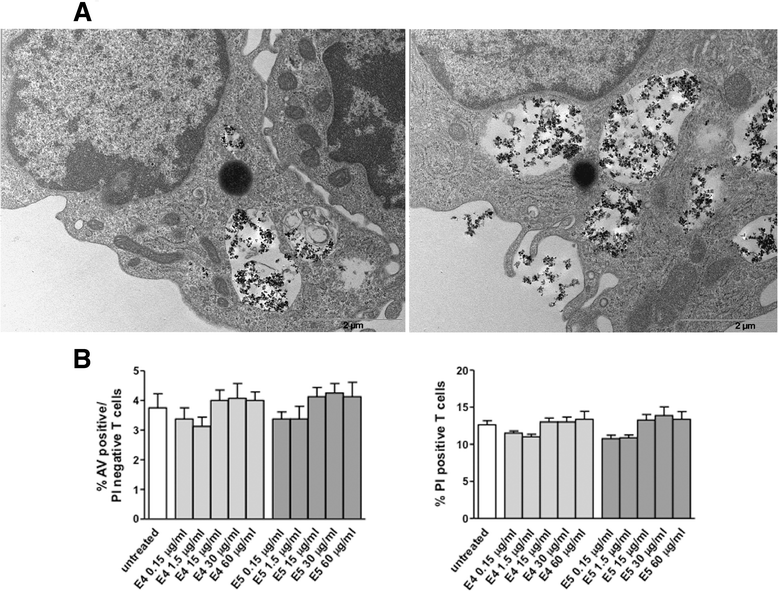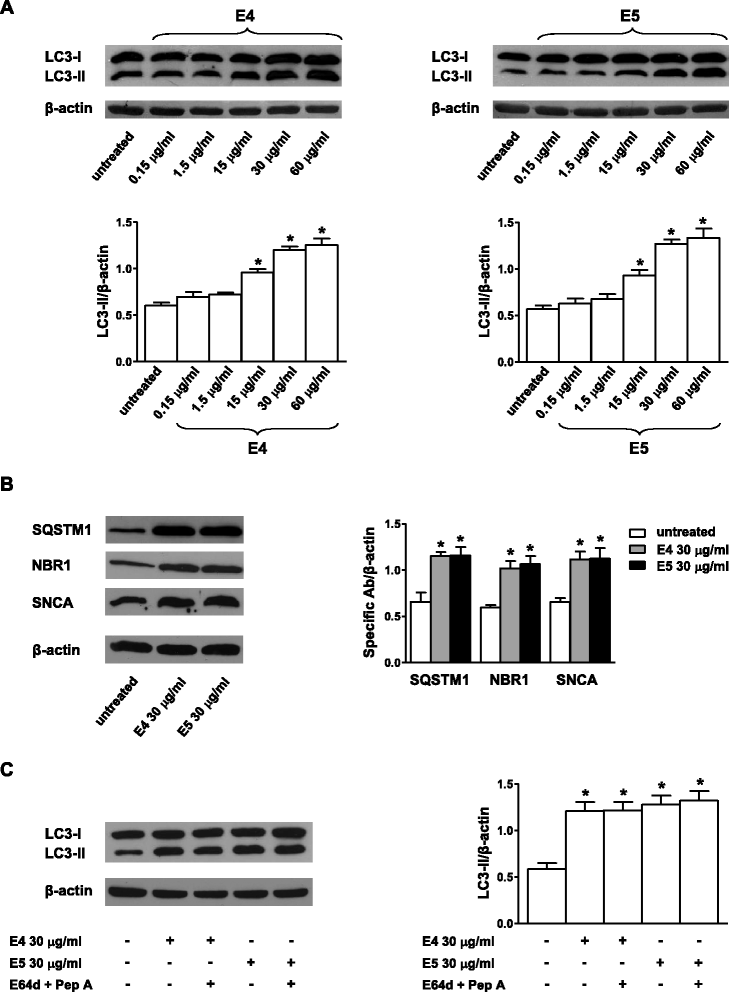Diesel exhaust particle exposure in vitro impacts T lymphocyte phenotype and function
- PMID: 25498254
- PMCID: PMC4271360
- DOI: 10.1186/s12989-014-0074-0
Diesel exhaust particle exposure in vitro impacts T lymphocyte phenotype and function
Abstract
Background: Diesel exhaust particles (DEP) are major constituents of ambient air pollution and their adverse health effect is an area of intensive investigations. With respect to the immune system, DEP have attracted significant research attention as a factor that could influence allergic diseases interfering with cytokine production and chemokine expression. With this exception, scant data are available on the impact of DEP on lymphocyte homeostasis. Here, the effects of nanoparticles from Euro 4 (E4) and Euro 5 (E5) light duty diesel engines on the phenotype and function of T lymphocytes from healthy donors were evaluated.
Methods: T lymphocytes were isolated from peripheral blood obtained from healthy volunteers and subsequently stimulated with different concentration (from 0.15 to 60 μg/ml) and at different time points (from 24 h to 9 days) of either E4 or E5 particles. Immunological parameters, including apoptosis, autophagy, proliferation levels, mitochondrial function, expression of activation markers and cytokine production were evaluated by cellular and molecular analyses.
Results: DEP exposure caused a pronounced autophagic-lysosomal blockade, thus interfering with a key mechanism involved in the maintaining of T cell homeostasis. Moreover, DEP decreased mitochondrial membrane potential but, unexpectedly, this effect did not result in changes of the apoptosis and/or necrosis levels, as well as of intracellular content of adenosine triphosphate (ATP). Finally, a down-regulation of the expression of the alpha chain of the interleukin (IL)-2 receptor (i.e., the CD25 molecule) as well as an abnormal Th1 cytokine expression profile (i.e., a decrease of IL-2 and interferon (IFN)-γ production) were observed after DEP exposure. No differences between the two compounds were detected in all studied parameters.
Conclusions: Overall, our data identify functional and phenotypic T lymphocyte parameters as relevant targets for DEP cytotoxicity, whose impairment could be detrimental, at least in the long run, for human health, favouring the development or the progression of diseases such as autoimmunity and cancer.
Figures




References
-
- Donaldson K, Poland CA. Inhaled nanoparticles and lung cancer - what we can learn from conventional particle toxicology. Swiss Med Wkly. 2012;142:w13547. - PubMed
Publication types
MeSH terms
Substances
LinkOut - more resources
Full Text Sources
Other Literature Sources

